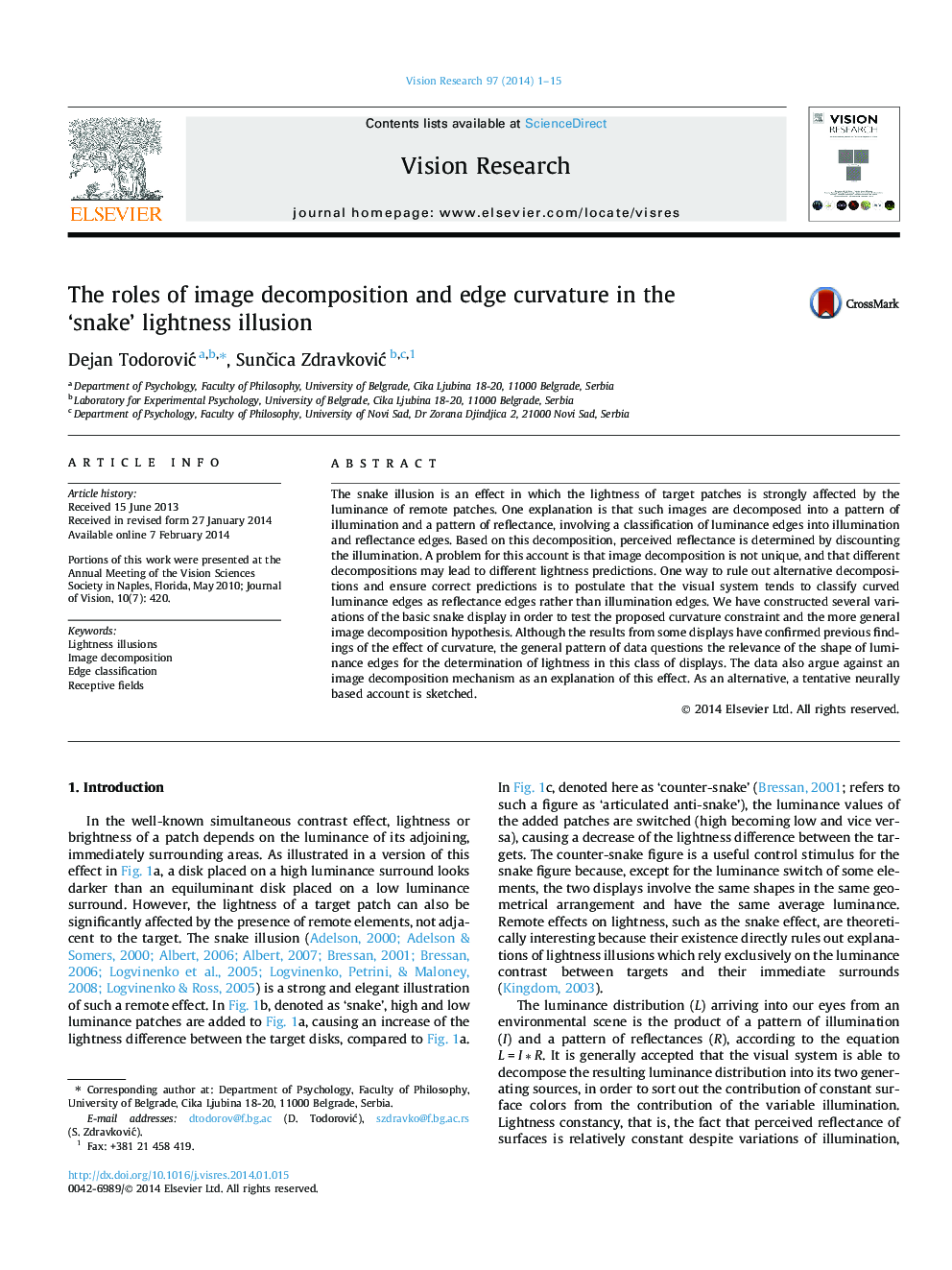| Article ID | Journal | Published Year | Pages | File Type |
|---|---|---|---|---|
| 6203534 | Vision Research | 2014 | 15 Pages |
â¢We explored the effect of the luminance of remote patches on lightness of targets.â¢We tested accounts based on curvature constraint and image decomposition.â¢Results question their relevance for the explanation of this class of effects.â¢A neurally based account of the effects was sketched.
The snake illusion is an effect in which the lightness of target patches is strongly affected by the luminance of remote patches. One explanation is that such images are decomposed into a pattern of illumination and a pattern of reflectance, involving a classification of luminance edges into illumination and reflectance edges. Based on this decomposition, perceived reflectance is determined by discounting the illumination. A problem for this account is that image decomposition is not unique, and that different decompositions may lead to different lightness predictions. One way to rule out alternative decompositions and ensure correct predictions is to postulate that the visual system tends to classify curved luminance edges as reflectance edges rather than illumination edges. We have constructed several variations of the basic snake display in order to test the proposed curvature constraint and the more general image decomposition hypothesis. Although the results from some displays have confirmed previous findings of the effect of curvature, the general pattern of data questions the relevance of the shape of luminance edges for the determination of lightness in this class of displays. The data also argue against an image decomposition mechanism as an explanation of this effect. As an alternative, a tentative neurally based account is sketched.
Graphical abstractDownload high-res image (109KB)Download full-size image
